Sunday, February 4, 2018, Port Chalmers (Dunedin), NZ, Otago Peninsula Scenic Drive
Dunedin (Māori: Ōtepoti) is the
second-largest city in the South Island of New Zealand, and the principal city
of the Otago region. Its name comes from Dùn
Èideann, the Scottish Gaelic name for Edinburgh, the capital of Scotland. The urban area
lies on the central-eastern coast of Otago, surrounding the head of Otago Harbor. The harbor and hills around
Dunedin represent the remnants of an extinct volcano. The city suburbs extend
out into the surrounding valleys and hills, onto the isthmus of the Otago Peninsula, and along the shores of the
Otago Harbor and the Pacific Ocean. Dunedin was the largest New Zealand city by
territorial land area until superseded by Auckland on the creation of the Auckland Council in November 2010.
Archaeological evidence points to the area having been long
inhabited by Māori prior to
the European arrival. The province of Otago takes its name from the Ngai Tahu village of Otakou at the mouth of the harbor, that
became a whaling station in the 1830s.
In 1848 a Scottish settlement was established by the Lay
Association of the Free Church of Scotland (a break-away group from the Presbyterian Church of Scotland). Reverend Chalmers was directed to look for five features when scouting New Zealand: Lime ( xxx), good fresh water source, coal for cooking and heat, deep water port, and seven hills (to mimic their home area of Edinburgh). After scouting the NZ area and returning to plan and organize the move, he died a few months before the planned move. Reverend Burns was selected to take his place (later his nephew Robert grew up in NZ). Between 1855 and 1900 many thousands of Scots emigrated to the incorporated city. Dunedin became wealthy
during the central Otago Gold Rush,
beginning in the 1860s. In the mid-1860s, and between 1878 and 1881, it was New
Zealand's largest urban area. The city population at 5 March 2013 was 120,246. While Tauranga, Napier-Hastings and Hamilton have eclipsed the city in size of population since the
1980s to make it only the seventh-largest urban area in New Zealand, Dunedin is
still considered one of the four main cities of New Zealand for historic, cultural, and geographic reasons.
Dunedin
has a diverse economy, which includes manufacturing, publishing and
technology-based industries as well as education, research and tourism. The
city's most important activity centers around tertiary education – Dunedin is home to
the University of Otago, New Zealand's oldest university (established 1869),
and the Otago Polytechnic.
Students account for a large proportion of the population; 21.6 percent of the
city's population was aged between 15 and 24 at the 2006 census, compared to
the New Zealand average of 14.2 percent. In 2014 Dunedin was designated as
a UNESCO City of Literature. Train station flower gardens.
Our second stop was at a great Settlers Museum that had artifacts from the early 1800s thru the mid-2000s.
Initial train locomotive in Dunedin.Maori Canoe.
Maori hut (above) and personal ornament (below).
Hand-made table for use in one of Dunedin's banks.

Remember these? We do.
Would we have lived in this for 12 years? Doubtful!
Remember these gas pumps? Larry does.
Womens' prison that had not been used for fifteen years. Kept for historic purposes.
Statue of Robert Burns, Dunedin poet.
Church converted to a theater (above) and apartments (below).
Both bus drivers today were quick to point out their new rugby stadium and reminded us several times that rugby is New Zealand's national sport and that they are world champions.
View of harbor from atop Signal Hill.

As our cruise ship cleared the harbor, we passed two features on our starboard:
World War II bunkers and a nesting area with scarce Albatross.
These birds have ten-foot wing spans.



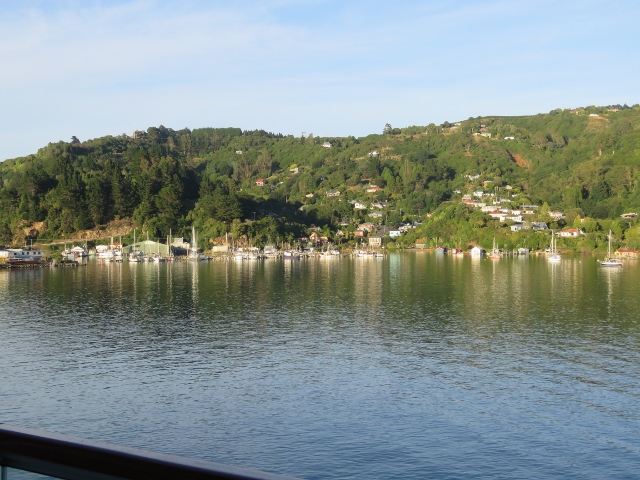











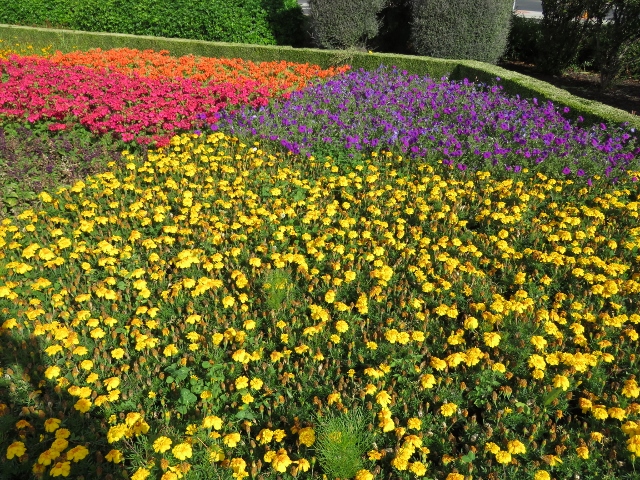















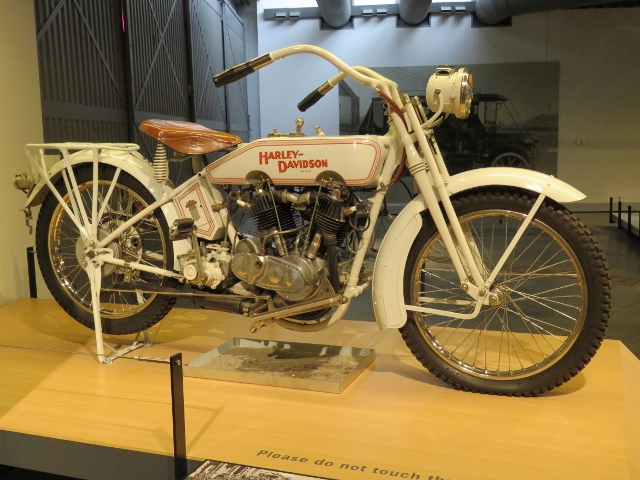
















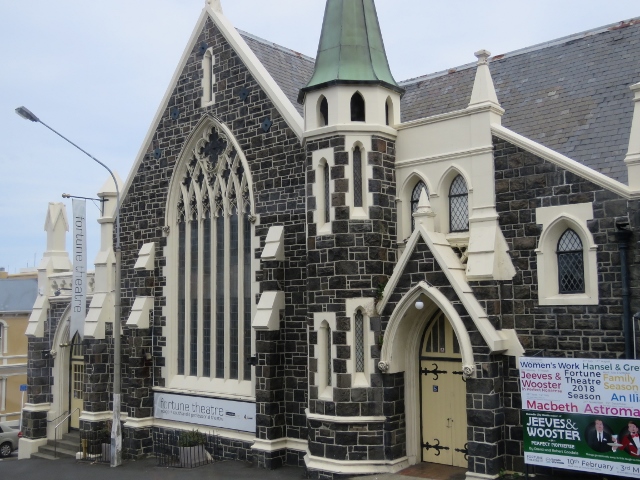




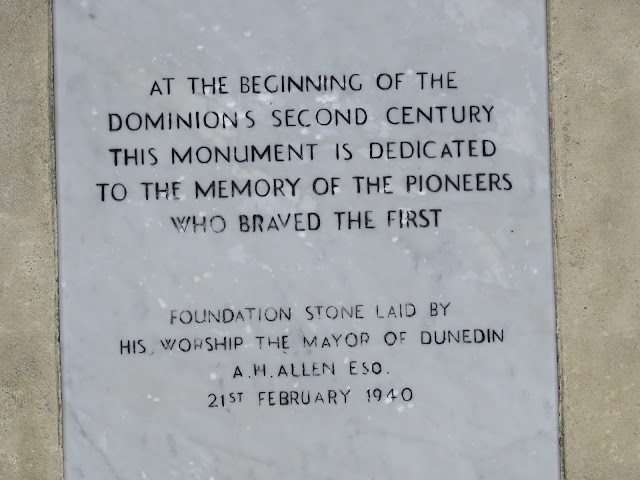






Comments
Post a Comment